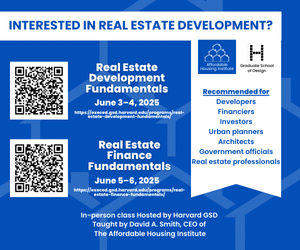Entities Endure (For a Long While)

By David A. Smith
7 min read
“Well, Doctor, what have we got, sustainability or impact?” – Paraphrased from a question asked of Benjamin Franklin, 1787
As established in last month’s Guru, economic sustainability is every questing mission entrepreneur’s holy grail. Yet in the afterglow of that achievement, the seeds of imperceptible but typically one-way evolution with multiple side effects are sown.
1. Strategic priorities: From headlong exploration to caution. For pre-sustainability entities, constant change is imperative above all others. The drive to survive means continuously launching new initiatives or products (knowing at least half of them will fail), hiring people with new skills, and restlessly pursuing an upward path, especially in revenue.
The focus turns abruptly to consolidation once reliable revenue crests above that magic moment of economic sustainability. Most post-sustainability management teams elevate optimizing existing products and processes rather than creating new ones. They plow resources into formalizing and standardizing, trying not to mess up what had been so difficult to capture in the first place.
2. Organogram: From head to body. Or, in a variant of the lexicon, I introduced a few columns back, from players and production to pipeline and portfolio. Newborn babies have large heads for their body size, and the body catches up as they grow. Economic sustainability often arises for the affordable housing entity when the pipeline is recurrent and the portfolio is accretive.
The growing corporate mass of regulated portfolio assets, with its externally imposed rules that change from time to time, means new job descriptions for full-time employees, who do work that the organization previously did ad hoc or via outsiders but has now (rightly) job-ified. It also means building systems and staff to run them, whose customers and contacts are internal, not external. Compliance becomes a militia headed by a Vice President of Defense Against the Dark Arts, a fiefdom in its own right
3. Staff turnover: From barbarians to bureaucrats. Lawrence M. Miller’s 1989 classic (see this excellent precis) has yet to be bettered for its cogent exposition of the stages of normal corporations and the various people who pass through them: prophet, barbarian, builder/ explorer, administrator, bureaucrat, aristocrat, and synergist. The cavalcade of personalities and roles changes as the company gets larger, more proven, and economically sustainable. Founders cash out or retire; prophets, barbarians, and builders cede ground to administrators. The organization inevitably picks up its share of bureaucrats or home-grows them without meaning to do so (cf. compliance).
Because of this, as the title of a 2020 Harvard Business Review article bluntly said, “Your company is too risk-averse.” Wrote the authors, one of whom (Daniel Kahneman) won the 2002 Nobel Prize for Economics for his work on ‘behavioral economics, “corporate incentives and control processes actively discourage managers from taking risks. Managers we interviewed acknowledged that although their risk aversion was bad for their companies, it was good for their careers.”
4. Business: From blue water to grocery shelf space. Even as the organization is settling into its newfound status as a comfortable incumbent, newcomers are entering the expanding competitive space. In affordable housing, where virtually everything is public, what was just pioneered can be rapidly replicated or counterfeited as real or ersatz competitors jostle for market share. The resulting pressure on scarce resources, coupled with the inescapable commoditization of yields, squeezes spreads – and the organization must react.
5. Zeitgeist: From bursting youth to late middle age. Few people are more conservative than the former upstart turned insider, and organizations are invariably more cautious than their founders. With portfolios, pipelines, and platforms to protect, organizations respond to market crowding in several ways.
A. Become a monoline. The most common approach: double down on your core product or service. Improve it, refine it, upgrade it with new features, and dominate that to the exclusion of other initiatives. Emphasize pipeline volume, cycle speed, standardization, and throughput.
Although monoline fixation can yield nicely rising graphs, it drives a wedge between the goal-setting C-suite and the beset line staff called upon to achieve those goals. Continuously revving the machine burns out staff and it desensitizes the organization to opportunity. (From time to time, such an organization may venture into an adjacent or affinity-related space, but in my experience, the effort is all too often half-hearted, short-leashed, and impatiently evaluated.) The end result can be Nassim Nicholas Taleb’s bête noire, fragility. Growing big by specializing in a narrow niche begets vulnerability. Just ask Blackberry or The Dodo.
B. Grow bigger. The natural propensity of any organism in a resource-rich environment, growth pleases boards of directors, rewards senior executive staff, and satiates builders of internal fiefdoms. Yet, endless growth virtually never occurs in nature, as J. B. S. Haldane explored a century ago in On Being the Right Size: “For every type of animal, there is a most convenient size, and a large change in size inevitably carries with it a change of form.” Haldane proved this via the ‘square-cube law’ – an organism’s strength increases as the square of its length, but its mass increases as the cube of its length.
Nor did Haldane stop with biology: “And just as there is a best size for every animal, so the same is true for every human institution.” The larger an organization becomes, the greater its proportion of internal staff to external line executives – and when the internal customers outnumber the external customers, the organization loses touch even as it gains arrogance.
Cities and Scale
Loss of responsiveness can become a significant problem for governmental institutions when the scale of what they govern outstrips their organogram’s capacity to expand. This concept was explored, and to my mind statistically proven, in a 2006 peer-reviewed paper in the Proceedings of the National Academy of Sciences (PNAS) entitled “Growth, innovation, scaling, and the pace of life in cities,” by a quintet of authors bookended by urbanist Luís M. A. Bettencourt and Geoffrey B. West, who built the thesis into a 2017 book. (They even spotted housing cost as a negative externality of urban scale: “Costs such as housing scale superlinearly.”) Cf. Chicago or New York City and the spontaneous rise of business improvement districts, which are tacit municipal economic secession or home rule.
C. Become an ecosystemic NIMBY. When a market has reached a certain level of oligopolist concentration, the incumbents gradually realize that although they can no longer make the pie higher (Bush 43), they at least have a shared interest in keeping the number of slices small. As this collective self-interest dares not speak its name, established stakeholders form trade associations and professional industry certification boards (into which all the incumbents are grandfathered) encourage rising standards based on experience, track record, balance sheet, ‘industry best practices,’ and other euphemisms for incumbency mercantilism. Cf. pre-2008 Fannie Mae and Freddie Mac.
D. Absorb the competition. One especially cold-blooded approach to growth is to become the business-evolutionary equivalent of Star Trek’s borg: ‘You will be assimilated. Resistance is futile.’ In the short run, it squelches external disrupters; in the long run, it squelches internal entrepreneurial creativity. Cf., among many others, Microsoft and Netscape.
These natural incumbency behaviors tend to make incumbents complacent, cautious, condescending, and well-cushioned. Enduring can coexist with delivering on mission goals for a long time. Yet, as my colleague Derek Long puts it, whether the journey is long or short, the streetcar is always named Entropy, and eternal vigilance is the price of the mission. When that’s lost, endurance can outlive impact, with symptoms and consequences that I’ll take up in the next column.
“Sustainable impact, if you can keep it.” – Paraphrased from Franklin’s answer, 1787
